Textual Studies of the Doctrine and Covenants: The Plural Marriage Revelation
$26.95
-
“A model of what the future of Mormon scriptural studies should be.” — Stephen C. Taysom
-
“A level of detailed analysis that is essential for future readings.” — Jonathan Stapley
-
"Smith succeeds in providing a sound theological and historical approach ." — Association for Mormon Letters
-
"An important, valuable contribution to the study of early Mormon plural marriage." — Dialogue: A Journal of Mormon Thought
-
"Readers will undoubtedly come away with a greater understanding of the revelation’s provenance and its importance to early Church members and ecclesiastical leaders." — BYU Studies Quarterly



Available in ebook for Kindle, Nook, Kobo, Google Play, and Apple.
Also available through Amazon and Deseret Book.
Download a free sample preview.
Part of our Contemporary Studies in Scripture series
Book Description:
Joseph Smith’s July 12, 1843, revelation on plural marriage was the last of his formal written revelations and a transformational moment in Mormonism. While acting today as the basis for the doctrine of eternal nuclear families, the revelation came forth during a period of theological expansion as Smith was in the midst of introducing new temple rituals, radical doctrines on God and humanity, a restructured priesthood and ecclesiastical hierarchy, and, of course, the practice of plural marriage.
In this volume, author William V. Smith examines the text of this complicated and rough revelation to explore the motivation for its existence, how it reflects this dynamic theology of the Nauvoo period, and how the revelation was utilized and reinterpreted as Mormonism fully embraced and later abandoned polygamy.
AuthorCast Interview with the Author:
Comprehensive Table of Contents:
.
Acknowledgements
1.Introduction
Delivery and Original Manuscript
Dating the Revelation
Manuscript Copies of the Revelation
Printing the Plural Marriage Revelation
Organization of the Revelation
2. The Revelation Heading: Evolving Context
3. Verses 1–5: The Ancient Roots of Polygamy
“Inasmuch as You have Inquired of My Hand”
“A New and an Everlasting Covenant”
“If Ye Abide not that Covenant, then Are Ye Damned”
4. Verses 6–15: The Permission to Seal
“The Keys of this Priesthood”
“Sealed by the Holy Spirit of Promise”
“Whom I have Appointed”
“A House of Order”
“As Pertaining to the New and Everlasting Covenant”
“Their Covenant and Marriage Are not of Force when They Are Dead”
5. Verses 16–27: Unconditional Sealing and Eternal Damnation
“But Are Appointed Angels in Heaven”
“Except Ye Abide My Law Ye Cannot Attain to this Glory”
“Sealed by the Holy Spirit of Promise”
“Fulness and Continuation of the Seeds”
“Then Shall They Be Gods”
“This Is Eternal Lives”
“They Receive Me Not”
“Which Shall Not Be Forgiven in the World Nor Out of the World”
6. Verses 28–45: Polygamy and the Afterlife
“As Innumerable as the Stars”
“As Touching Abraham and His Seed”
“It was Accounted unto Him for Righteousness”
“They Have Entered Into Their Exaltation. . . . Therefore He Hath Fallen From His Exaltation”
“And Restore All Things”
“Hath Committed Adultery and Shall Be Destroyed”
“I Have Conferred Upon You the Keys”
7. Verses 46–50: Joseph Smith and the Keys of the Kingdom
“I Say Unto You, My Servant Joseph”
“Shall Be Eternally Bound in the Heavens”
“Whosesoever Sins You Remit”
“With Abraham Your Father”
“I Seal Upon You Your Exaltation”
8. Verses 51–57: The Secret of Emma
“That Which I Commanded You to Offer Unto Her”
“Receive. . . . [or] Be Destroyed”
“For He Hath Been Faithful Over A Few Things”
“Let Not My Servant Joseph Put His Property Out Of His Hands”
9. Verses 58–63: The Mechanics of Plurality and Kingdoms of Heaven
“I Will Justify Him”
“If Any Man Espouse a Virgin”
“To Multiply and Replenish the Earth”
“For They Belong To Him”
“That They May Bear the Souls of Men”
“For Herein Is the Work of My Father Continued”
10. Verses 64–66: The Law of Sarah
“If She Receive Not This Law”
“I Will Reveal More unto You, Hereafter”
11.A Speculative Modern Revision
Section 132
Epilogue: The Legacy of the Plural Marriage Revelation
The Severity and Consequences of Adultery
Utah Politics and the Revelation
Polygamous Praxis in Utah
A Legacy of Sealing
A Theological Legacy
Sealing and Excommunication
Mormonism Today
Addendum: The Kingsbury Manuscript
The Kingsbury Manuscript
Notes on Horace K. Whitney Manuscripts of the Plural Marriage Revelation
Bibliography
Scripture Index
Subject Index
Q&A with the Author:
.
Q: Give us a little background into how you became interested in researching plural marriage?
A: Section 132 is Joseph Smith’s final revelation text and in some ways, it had a greater influence over his subsequent legacy than any other text aside from the Book of Mormon. My main historical interest in Mormonism is its preaching texts. Joseph Smith’s revelation texts, together with his own sermon corpus, are connected in many ways to that broader Mormon and Protestant sermon culture. The revelation had deep influence in the relationships between Territorial and statehood Utah and the United States; and made for interesting common ground narratives with other segments of the social landscape in America, as well as indelibly marking the boundaries between Mormon faithfulness and Protestant America even into the twenty-first century. Those stories fascinated me.
Q: It's a common misconception that Joseph Smith first learned about polygamy through the plural marriage revelation, when, in fact, he had already been practicing it for a few years prior to receiving it. If not to introduce it, what was the purpose of the revelation when it was received?
A: The revelation arises from a request by Hyrum Smith, but that story has multiple axes. His brother Hyrum seems to have been convinced of the virtue of polygamy out of its promise of being eternally with his deceased first wife, Jerusha Barden, while not abandoning his second wife, Mary Fielding. This domestic concept of heaven was the logic of polygamy for Hyrum. Emma Smith, first wife of Joseph, was deeply opposed to her husband’s polygamy for a multitude of reasons. Jealousy was at issue, but perhaps more-so the state of the Mormon community and its political and social predicament. Hyrum apparently believed his own adaption to polygamy could convince Emma of its virtue and bring Joseph and Emma into harmony. The result was a text largely directed to Emma Smith and very much a contemporary construction, yet it served to drive future social, religious, legal, and political tensions—including various schisms within the Church and the Smith family, the rise of Brigham Young and the apostles, and the long territorial status of Utah.
Q: In your book you show how the revelation points to new theological ideas and priesthood structures that Joseph introduced during the Nauvoo period. What are some of these new ideas, and why are they important to understanding the revelation?
A: The revelation brings to a climax many threads from 1830s Mormonism. For example, a refined picture of heaven, church hierarchy, and the Abrahamic story. It also reflects significant discourse in Nauvoo regarding coping with loss, heavenly progression, etc. Some of the theological threads originated with an event in June 1831. It was during a conference of that month that Joseph Smith introduced the “high priesthood.” Together with this introduction came the concept of “sealing up to eternal life.” Could a person, even a whole congregation, be guaranteed a seat at the Throne of Grace in this life? The high priesthood had the power to do this. I take some time in the book to explore the relationship of the high priesthood and its divisional office of patriarch with the idea of sealing, and how this idea became fully realized with the Nauvoo incarnation of sealing and priesthood. The plural marriage revelation draws on some elements of Smith’s Nauvoo preaching in public and private, some of which shows an interesting contrast between Smith’s public sermons and later interpretations that were prominent in Utah.
Q: What are some of the lasting impacts of the plural marriage revelation that are affecting Mormonism today?
A: Many important themes in current Mormonism are based on narratives derived from the plural marriage revelation. One of these is serial polygamous marriages where a man may remarry after the death of a spouse and have hopes that both households will be intact in the heavens. Women are not eligible for such practices. Temple practices of sealing, marriage, and family are traced to section 132, though not explicitly. The “Proclamation on the Family” is largely founded in nineteenth-century values that find textual support in the plural marriage revelation. The long defense of polygamy through the beginning of the twentieth century shaped the Church’s political attitudes in Utah to a great extent. Utah’s reaction to that political struggle was to position Mormons as ultra-Americans, rather than members of a dissenting sect of outsiders. These are just a few areas where the plural marriage revelation has had a large impact on Mormons historically and in the present.
Q: What are you hoping that readers will gain from reading Textual Studies of the D&C: The Plural Marriage Revelation?
A: My hope is that readers will come away with an increased respect for the early Mormons (especially women) who lived during the time of the practice of polygamy and its ending; as well as the power the revelation had over Mormon teaching and thought. The revelation is rarely quoted or referenced in the LDS church of the last nearly one hundred years, which was influenced by the political tension between Washington and Utah. I hope readers will gain a greater understanding of the roles that culture, the migration westward, public perception, and social change had on the public views of Latter-day Saints. Section 132 is a deeply-embedded component of Church teachings on eternal family, the approach of the Church towards gay rights and marriage, and social and political issues like the ERA and the role of women within the Church. It is not an exaggeration to say that the revelation on polygamy is one of the cornerstones that underlies what Utah and the LDS church are today.
Praise for Textual Studies of the Doctrine and Covenants:
“William Smith has managed to do what other scholars have only dreamed about—a thorough and comprehensive study of one of the most controversial Latter-day Saint revelations, Doctrine and Covenants 132. In Textual Studies of the Doctrine and Covenants: The Plural Marriage Revelation, Smith breaks down the context, history, and implications of the Celestial Marriage revelation, a chapter of scripture that has made a larger impact than potentially any other revelation in Mormonism. He combines solid scholarly insight along with primary sources to weave together an extensive look of this important text that still affects millions of Latter-day Saints to date. For anyone looking to better understand both Mormonism and this particular doctrine, one need to look no further than William Smith's new book.” — Lindsay Hansen Park, Year of Polygamy Podcast
“No Mormon text is as ritually important and as fundamentally mysterious as Doctrine and Covenants 132. William V. Smith’s work is a fine example of what a serious-minded and meticulous blend of source and redaction critical methods can tell us about the revelations produced by Joseph Smith. This is a model of what the future of Mormon scriptural studies should be.” — Stephen C. Taysom, author of Shakers, Mormons, and Religious Worlds: Conflicting Visions, Contested Boundaries
“William Smith’s Textual Studies of the Doctrine and Covenants: The Plural Marriage Revelation is done rigorously with fierce scholarship to help us make sense of one of the most controversial passages of scripture in the LDS canon.” — Gina Colvin, A Thoughtful Faith Podcast
“William Smith’s work on the plural marriage revelation spans the entire history of the Restoration, with a wealth of context and reception history. Smith makes accessible important and hidden aspects of the story of the revelation in a sometimes dizzying exploration of polygamy, church, and culture. Most importantly Smith’s expertise in textual criticism renders a level of detailed analysis that is essential for future readings.” — Jonathan Stapley, author of The Power of Godliness: Mormon Liturgy and Cosmology
“Section 132 of the Doctrine and Covenants is many things at once: a theological manifesto, a personal communication, an apologia, a document rooted deeply in multiple historical contexts, and a central source of Mormonism’s evolving understanding of eternal marriage. With great patience and admirable clarity, Smith weaves all of these strands together into a line-by-line reading of this crucial text and its major variants.” — Michael Austin, author of Re-reading Job: Understanding the Ancient World’s Greatest Poem
“William Victor Smith’s Textual Studies of the Doctrine and Covenants: The Plural Marriage Revelation offers a fresh look on a topic that so many of us fear and/or are sickened to consider. . . . [D]o I recommend this book? Yes, whole-heartedly. And to be honest, I strongly recommend this as a resource for women.”
— Exponent II
“William V. Smith’s Textual Studies of the Doctrine and Covenants is yet another home run for Greg Kofford Book’s Contemporary Studies in Scripture series. Not only does Smith make one of the most complex and controversial revelations in the Mormon canon accessible to a lay readership, but his attention to detail and the expansive range of his historical analysis will also make it invaluable to scholars. Historians and theologians alike will benefit from Smith’s painstaking research. Anyone who is serious about Mormon history and scriptural studies should have this on their shelf for continual reference.”
— Times & Seasons
“I’ve read a variety of books on the topic of polygamy. Most have focused on the struggles individuals had in living this difficult requirement, while leadership flaunted it in the face of its enemies. William V. Smith’s book takes us on a fresh perspective, dealing directly with the revelation and how each section related to major periods of the Church under Joseph Smith, Brigham Young, Wilford Woodruff, joseph F. Smith, and us today. D&C 132 revelation is laid out raw and helps us understand how we in the 21st century must deal with the enigma of plural marriage today.”
— The Millennial Star
"Smith’s study is extremely useful for all those interested in the topics of polygamy and Mormon thought. . . . having all these ideas and sources brought together are extremely helpful to any readers."
— Juvenile Instructor
"Smith’s greatest strength is his exhaustive research: he not only knows all the literature there is concerning Nauvoo polygamy, but he is also able to trace ideas through obscure 1920s priesthood manuals. . . . Smith is providing a layer of historical and comprehensive research that is impressive in breadth."
— Benjamin E. Park, Professor Park's Blog
"Throughout this engaging volume, Smith succeeds in providing a sound theological and historical approach to the multifaceted doctrines and principles which surround the subject of celestial plural marriage."
— Cheryl Bruno, Association for Mormon Letters
"Smith’s treatment of Joseph’s plural marriage revelation is a syncretic blend of approaches: textual analysis, historical reconstruction, thematic narrative, and speculation. . . . [He] has produced an important, valuable contribution to the study of early Mormon plural marriage."
— Gary Bergera, Dialogue: A Journal of Mormon Thought 15, no. 4
"[R]eaders will undoubtedly come away with a greater understanding of the revelation’s provenance and its importance to early Church members and ecclesiastical leaders."
— Brian C. Hales, BYU Studies Quarterly 57, no. 4
About the Author:

William Victor Smith received a PhD in mathematics at the University of Utah, where he also studied history under Davis Bitton. After post-doctoral work at Texas Tech University, he worked at the University of Mississippi, the University of Pau, and Brigham Young University. He has been published in Dialogue: A Journal of Mormon Thought and is the admin for the Book of Abraham Project website. He currently lives with his wife Gailan in Orem, Utah. Together they have six children.
More information:
286 pages
ISBN: 978-1-58958-690-1 (paperback); 978-1-58958-691-8 (hardcover)
Published February 2018

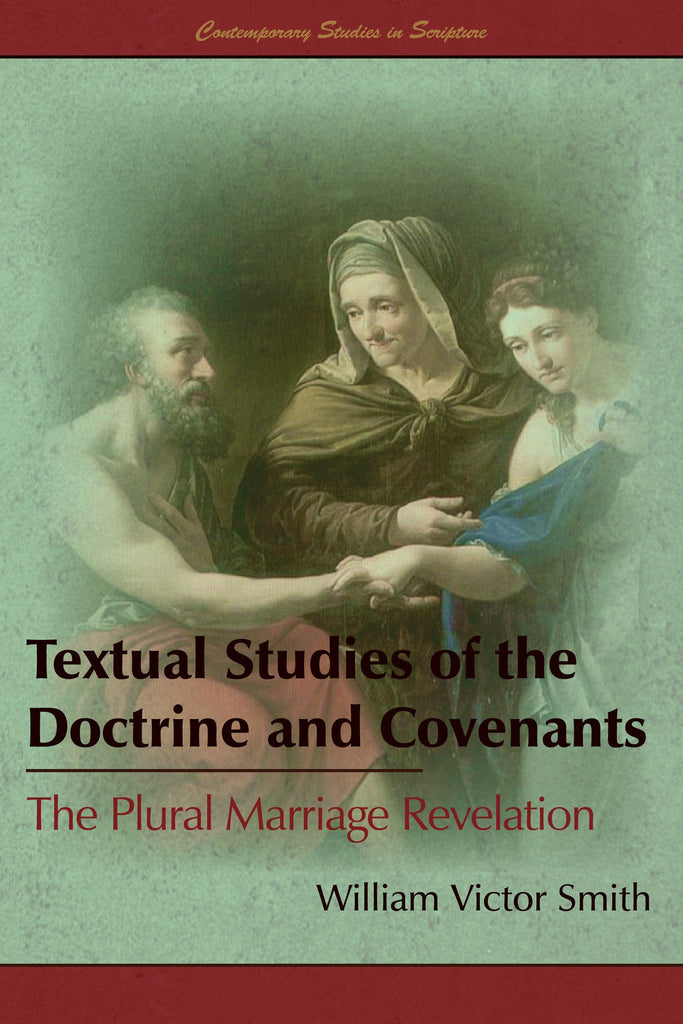



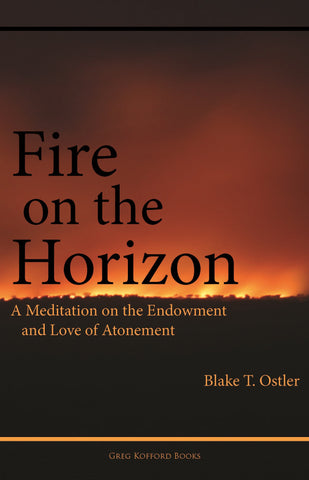
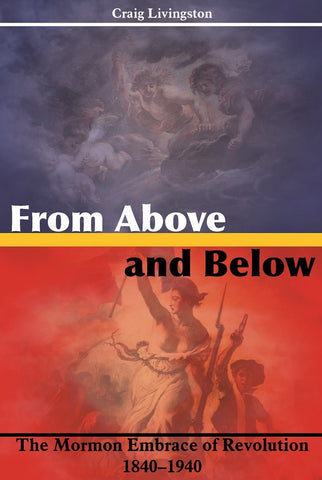
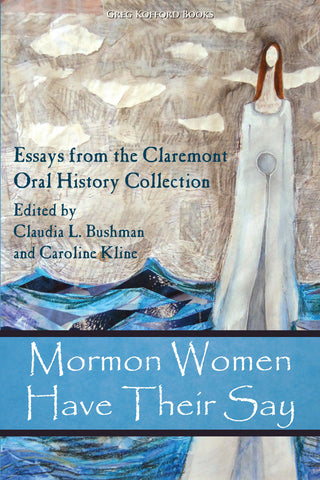
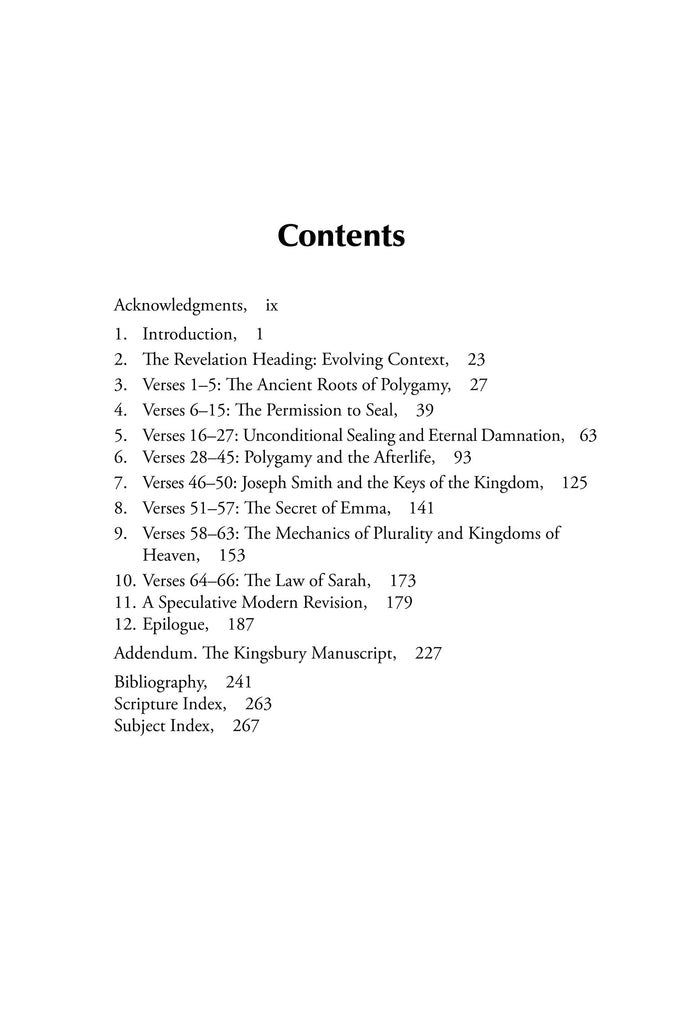
Share this item: